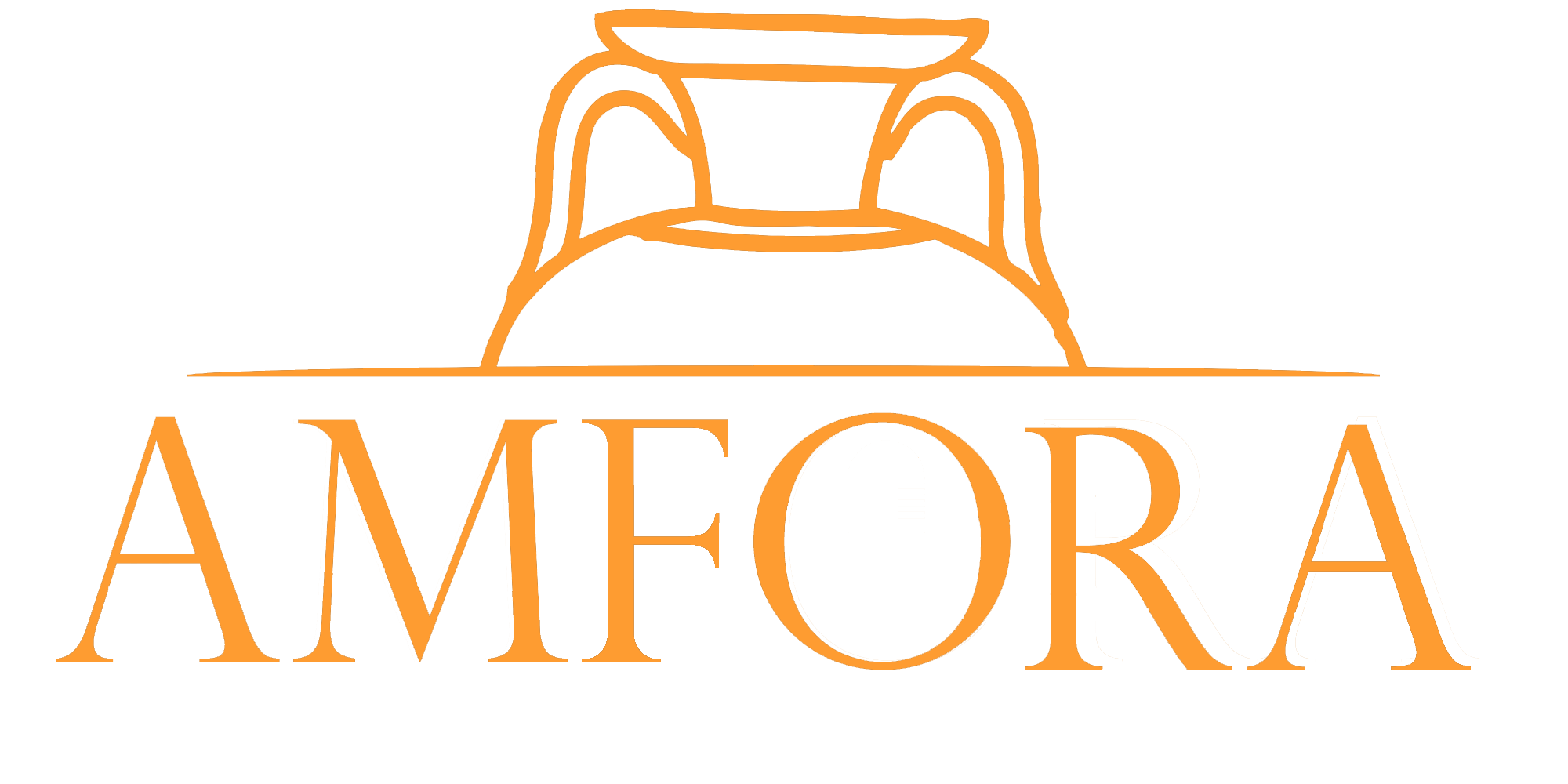Zogu Bridge: Solutions to rescue this engineering masterpiece of the 20s’
Zogu Bridge, a Cultural Monument of the First Category, represents a unique engineering work for Albania in the 20s’ which marked the road junction of the north of Albania with the other areas. It is heading toward collapse and Amfora Media together with the “EDEN” Center through “solutions journalism” have identified environmental solutions for its salvation.
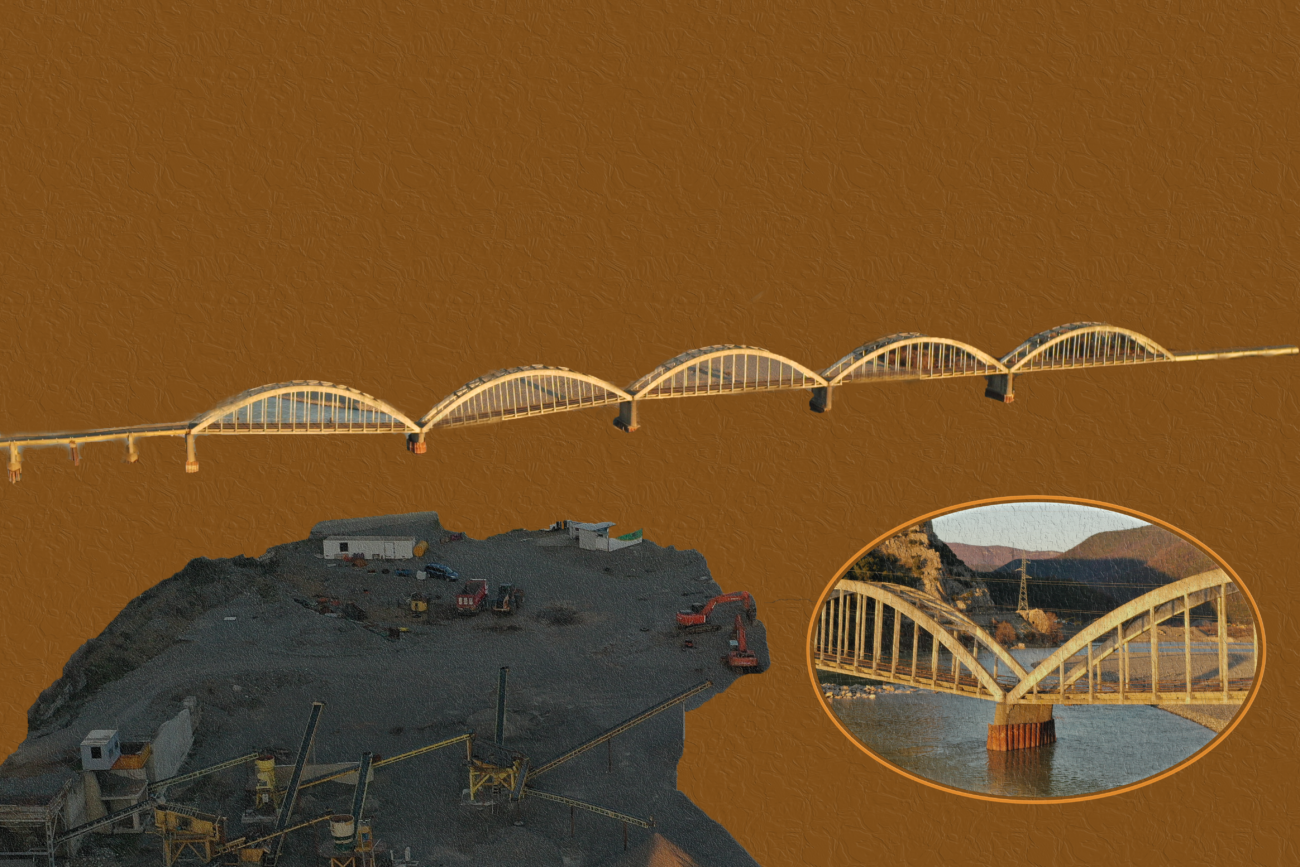
Illustrative graphic from Amfora Media
The “Zogu Bridge” is considered a masterpiece of civil engineering from the early 20th century in the Balkans. Built in 1927 in Northern Albania, the bridge connected the two sides of Mat River through fine architecture of steel arches.
After the 90s’ the “Mati Bridge” as it is also known, was declared out of function for the vehicles, and in 1999, it was declared a monument of culture. Nevertheless, residents of the area continued using it as a pedestrian bridge, until 2021 when one of its columns was damaged and sank at the Mat River bed, putting it in danger of collapse.
Amofra Media and “Eden” Center, which is of environmental character, have investigated the situation on sight, coming out with possible solutions which can improve the environmental situation and prevent the bridge collapse.
For Ermelinda Mahmutaj, who is an environment expert at “Eden” Center, several concrete measures need to be taken, so the monument gets out of danger, including the restriction of aggregate extraction activities, the mechanical incorporation of sediments, and the ban on constructing new hydropower plants.
These measures, according to the expert, will help the river flow return closer to its natural state as the water flow will continue without any obstacles. This would help the river rebuild its natural ecosystem into a wide bed with deposits and riverside forests.
- Restricting the excavation of aggregates from the bed of Mat River
The damages on the bridge are accelerated by private companies which scoop out the river bed to excrete the gravel which is used as row material in construction, decreasing the bed depth and increasing the speed of the water flow.
“It is very important these companies do not carry out massive and everyday work, as is currently the case. The ecological balance must be conducted and environmental permits must be revoked for the companies which cause irreversible damage,” suggested Ermelinda Mahmutaj as a first solution to the problem.

The National Environment Agency listed 15 companies that have been equipped with an environmental permit to carry out their activity of extracting gravel from the Mat River. Meanwhile, there was only one company that had an environmental permit to carry out such activity near Zogu Bridge.
This activity has transformed the river bed and altered its river flow. “It has been proven that extraction of gravel from the alluvial plains is one of the main anthropogenous ways which brings morphological changes in the river flow”, analyzed for Amofra Media, Ermelinda Mahmutaj.
The Ministry of Culture clarified that the closest point of extracting gravel is 1 km away from the bridge, nevertheless, satellite images show that the point where the bridge is damaged is no further than 400 meters from the river bank where the private company carries out its work.
“This business carries out its activity normally and has created a high accumulation of gravel, like barriers, which hamper the water flow from reaching their activity. This has an impact on the narrowing of the bedside and the orientation of the river flow in a tighter “channel” and one direction”, analyzed Mahmutaj.
“This flow crosses the damaged column of Zogu Bridge, whereas the other column has also begun to be damaged,” she stated.
The continuous extraction of gravel has had an impact on the decrease of deposits in the river bed, by decreasing the bottom level and increasing the depth of the flow.
“…the continuous excavation of inerts has deviated the river flow to the weakest column of the bridge, where the feet are made of steel structures”, the Ministry of Culture officially confirmed this fact in its response to Amfora Media.
“The situation there continues to bloom when it comes to companies which continue excavating the Mat River bed, exploiting its aggregates and potential, as there are over 40 companies which illegally work there”, stated Elton Laska, an activist at the Sebastia Youth Center.
He added that this number has come out of his empyrical investigation. Whereas in the satellite images and measurements, it appears that within a 7 km aerial distance from this bridge which is also a cultural monument, there are at least 8 businesses that extract gravel from the river bed.
“The conditions of obtaining an environmental permit for gravel extraction needs to be reviewed and no new business should be considered for a permit,” suggested environment expert, Ermelinda Mahmutaj, as the first possible solution from the administrative point of view.
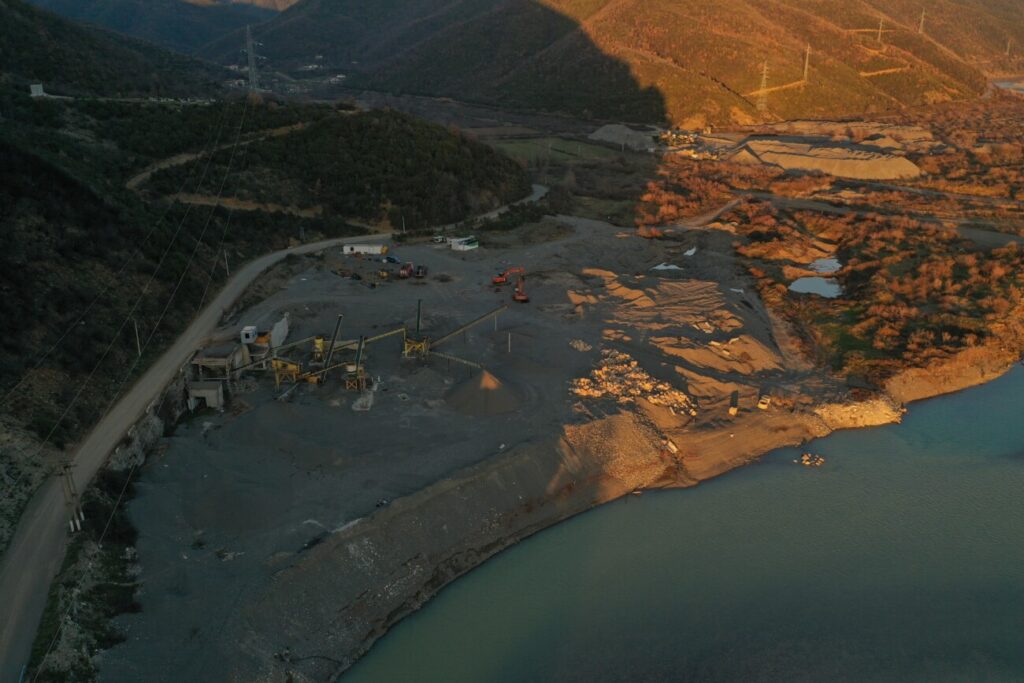
The Ministry of Culture emphasized that it cannot intervene in the work of private businesses which extract gravel away from the area of the cultural monument, while the National Environment Agency stated that it has carried out periodic controls on businesses, without explaining the findings of these inspections or whether they have noticed legal violations.
- Incorporation of river sediments in the Zogu Bridge area
Thirst for gravel seems to be devouring this monument of culture. The high concentration of private companies in this area does not happen by chance but is rather due to the gravel layers which are very rich and in large quantities.
“It is at River Mat where “Kuatenari i Vonë”, has been discovered, which form the alluvial plain, which contains layers of thick gravels, with a maximal thickness of 200 meters and high permeability”, analyzed the environment expert from EDEN Center, Ermelinda Mahmutaj.
The second solution suggested by the expert is a mechanical one, rather than an administrative one. It is focused on the acceleration of the natural process of recovering the river bed and it is realized by incorporating sediments in the areas where the bed has been deepened due to the extraction of gravel from companies.
To perform mechanical incorporation of sediments, interventions at the river bed need to be done carefully, considering the origin of the gravel which should be extracted from the same river bank because the gravel of the area is very special and characteristic.
“This solution seems contradictory for the natural recovery because it requires the extraction of gravel, however, this is not the case. Here, we are not speaking of massive extraction but rather the extraction of a small number of aggregates to regulate the bridge columns,” analyzed as a second solution Mahmutaj.
To read the full “Environmental overview” prepared by the EDEN Center for Amfora Media, read it below:
“At the beginning of December [2022], the bridge suffered a new fissure, sinking even more and being in danger of collapse,” stated Laurin Sana, a young person from the area.
The mechanical solution needs to focus on the northern side of the bridge, increasing the number of sediments that will fill the bridge bed and will decrease the column’s exposure to erosion.
Due to a lack of funds from the government, Mahmutaj suggested that current companies extracting gravel contribute to the rehabilitation of the damage, as a quick solution that eliminates intervention delays.
“Similar to every environmental solution, this requires time, however, it is the most sustainable and long-term solution,” explained Mahmutaj for Amfora Media.
“Built in 1926 and concluded within a year, this infrastructural work made it possible for the very first time for Albania to be connected through a motorway, meaning the north and the south parts were divided until then,” said history researcher, Eraldo Kapri, speaking on the revolution this bridge brought to the country.
Elsa Sula was born in the Gërnac village of Milot in Northern Albania. The nearby Mat River divides the area into two parts and separates the north from the rest of the country. Elsa and her brother visited their relatives on the other side of the River by easily crossing a bridge.
“I remember when my brother and I were in the first protest for the protection of the bridge, our 85-year-old grandfather was watching TV, and when we returned home, he told us stories about all the memories he had from there”, Elsa Sula recalled.
“My father has many relatives in that area and he has crossed that road several times to visit his uncles and sees it as a childhood memory, but even later on when he was married in 1994, this was the place where he had his first wedding photos and it turned into a family conversation which unites 3 generations”, added the 27-year-old woman.
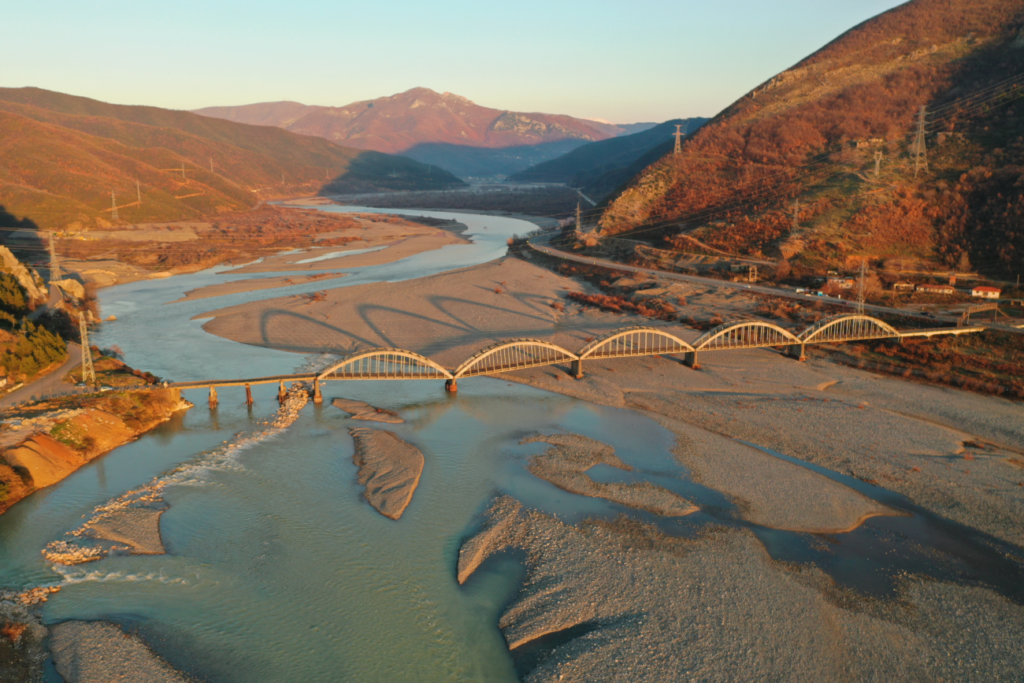
The young people of this area are protesting for two years now and are demanding from the authorities to take action for the protection of this monument and the ban on work of the private construction companies at the river bed which impacts the ruining of the bridge.
- The ban on new hydropower plants
The rivers and streams which supply the Mat River and form its drainage basin have been impacted by the construction of hydropower plants. Their dams and pipes have altered the water flow of Mat drainage basin.
“The hydropower plants planned to be constructed alongside the drainage basin of Mat River should be canceled. Otherwise, they will further contribute to the decrease of river sediments,” listed as a third solution for the reduction of erosion, environment expert Mahmutaj.
Amfora Media was officially informed by the Institute of Construction, the institution that specializes in the assessment of construction in Albania, that it has not been asked to provide an opinion on the condition of the bridge structure. The Institute of Geosciences confirmed that they have not conducted any studies for Mat River’s bed.
“The drop of the foundation level where the column is supported due to the decline of the number of river sediments has revealed the column which has no support and the continuous “blow” to the column by the tight river flow which has been oriented toward one direction”, said Ermelinda Mahmutaj explaining the damage of this bridge, which is also a cultural monument, after paying an insight visit to the monument and the nearby area.

“We have to add to all that the lack of restorations and maintenance of the monument for many years now, which make the bridge very vulnerable and have an impact in the acceleration of its degradation, leading to its collapse,” she added.
“According to the expertise conducted by the experts of the respective fields, the reasons behind the structural damages are related to erosion (geomorphological and geological conditions), the exploitation of the river bed to excrete gravel, the change of the river flows which supply Mat River with gravels, resulting into low deposits at the alluvial plain”, confirmed the Ministry of Culture.
The engineering work over Mat River was designed by the “father of concrete bridges”, the famous German engineer Emil Mörsch, whereas works were implemented by the brilliant engineers, Erwin Schniter and the young, Gjovalin Gjadri. Its initiator was king Ahmet Zogu, whose name has been given to the 478-meter-long bridge to honor him, hence “Zogu Bridge”.
“This is the first public infrastructural work built by the Albanian state and it is the biggest work ever done,” stressed researcher Erald Kapri.
- Approach toward tourism
The transformation of the bridge into a tourist attraction and its promotion are seen by the experts as a great opportunity for the future of the monument, after another restoration phase is done, starting through concrete work by technical teams of engineers and environment experts.
“We should start a big campaign to raise funds for the feasibility, technical and environmental study and lastly for the investment. By bringing together institutions with Europa Nostra and with the support of the young people of Laç who have raised the issue, this would help in this direction”, recommended as part of the solution, environment expert, Ermelinda Mahmutaj.
For the young people, this bridge is a symbol of unity for the residents of the area and those that have many memories there, it connects them with their childhood, their visits to their relatives, and wedding photoshoots.
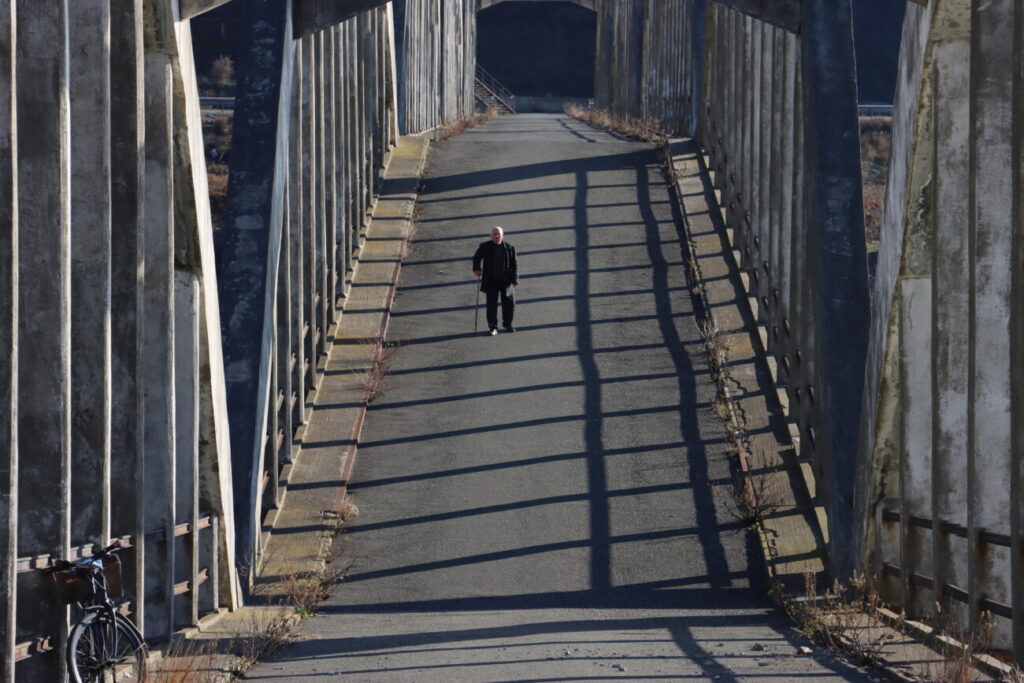
For two years now they have been protesting, demanding from the authorities to take action for the protection of this monument and the ban on work of the private construction companies at the river bed which affects the ruining of the bridge. Activists of Sebastia Youth Center have advocated for the monument to be included in Europe’s endangered list.
“It was Europa Nostra, which assessed this bridge as one of the 12 most endangered monuments of culture in Europe, then they immediately passed it to the 7 most endangered monuments”, said activist Elton Laska.
“It is considered an important achievement in the field of metal and concrete constructions over rivers in Southern Europe,” Europa Nostra wrote in their reasoning which aims at protecting important cultural monuments in Europe which are at risk of being destroyed.
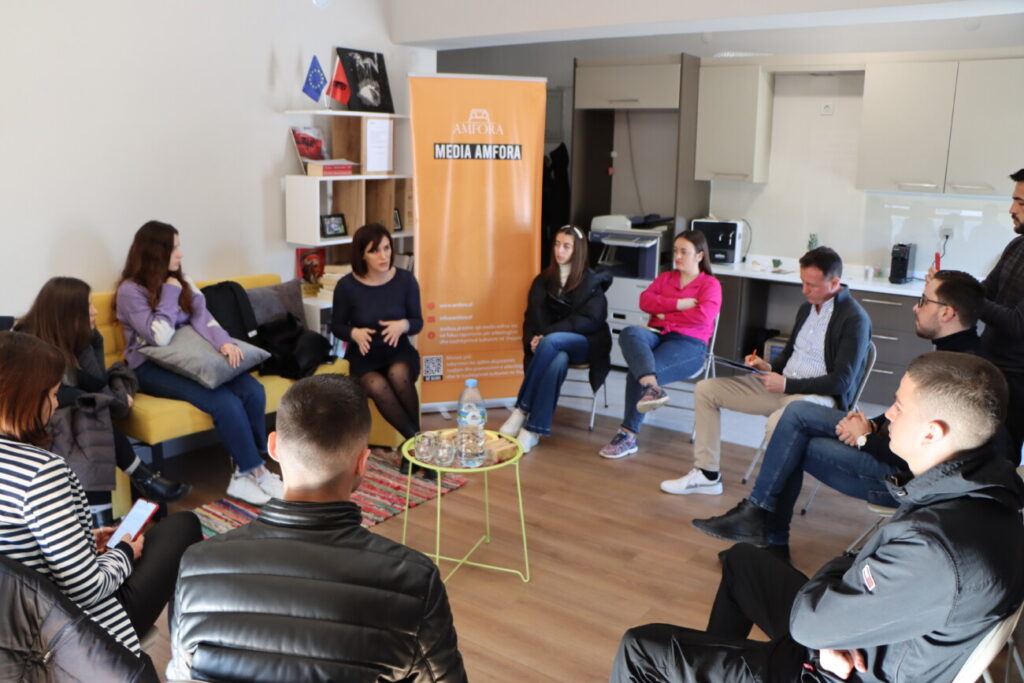
Even though it has been declared a Cultural Monument of the first Category in Albania, its monument record says that only one moderate restorative work was done in 2010, without providing details about the works carried out.
According to the activists, Europa Nostra experts have expressed their desire to come and have a close-up look at the bridge, however, such a thing has not happened because Albanian institutions did not respond in time.
“They have asked since October-November 2022 to come and have an on-sight verification. Based on that evaluation they could give us recommendations on how this bridge can be rescued,” said activist Elton Laska.
“Nevertheless, we once again saw the negligence and lack of reaction from our institutions whom they had officially asked for a meeting,” added Laska.
“We are waiting for our institutions to take responsibility for this cultural heritage which is now highly endangered. Following the first precipitation of the last month, we have seen that it has been damaged even more and the situation is urgent”, explained Emarilda Leti, an activist at the Sebastia Youth Center.
For the young people of Sebastia Center who have gathered 3054 signatures through an online petition for the rescuing of the bridge and the cultural heritage experts, the engineering work must be protected through intervention for its restoration and the halt of activities that damage the surrounding environment.
“I really hope we will find the opportunity to save the bridge and restore it because it shows to the different generations a memory, which they really need to keep, especially of the 20th century, which is the most important century for Albanians, and we need to save it for a long time”, concluded history researcher, Erald Kapri.
